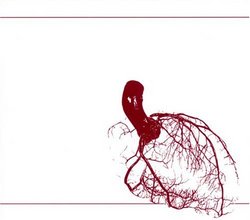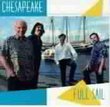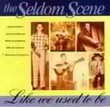| All Artists: Cecil Taylor Title: Nefertiti Beautiful One Has Come Members Wishing: 3 Total Copies: 0 Label: Revenant Records Original Release Date: 3/18/1997 Release Date: 3/18/1997 Genres: Jazz, Pop Style: Avant Garde & Free Jazz Number of Discs: 2 SwapaCD Credits: 2 UPC: 630814020224 |
Search - Cecil Taylor :: Nefertiti Beautiful One Has Come
 | Cecil Taylor Nefertiti Beautiful One Has Come Genres: Jazz, Pop
Uncompromising and endlessly controversial, Cecil Taylor's percussive, intellectual approach to jazz composition, improvisation, and piano remain largely outside the mainstream after more than 40 years. The performances on... more » |
Larger Image |
CD DetailsSynopsis
Amazon.com Uncompromising and endlessly controversial, Cecil Taylor's percussive, intellectual approach to jazz composition, improvisation, and piano remain largely outside the mainstream after more than 40 years. The performances on these live recordings, made in Copenhagen in 1962, are as bracing and unexpected today as they were the night they were created. A classically trained pianist prior to discovering the music of Thelonious Monk, Duke Ellington, and Horace Silver, Taylor soon developed a percussive, clustered, impressionistic style that, while taking Monk as a harmonic starting point, charts a course straight for the stratosphere. Indeed, Taylor frequently seems to have dispensed with both melody and form, yet he's brilliant at conveying a broad complex of emotions, from introspection to tenderness to rage. Recorded at the famous Cafe Monmartre, these performances capture Taylor in his classic bass-less trio with drummer Sonny Murray and his longtime foil, alto saxophonist Jimmy Lyons. It is a breathtaking, sometimes unnerving, recording. --Fred Goodman Similar CDs
|
CD ReviewsWhen will they get it???? Michael G. Mcneill | Rochester, NY United States | 05/18/2001 (5 out of 5 stars) "Cecil Taylor is one of the great jazz pianists, and all creative improvisors need to deal with his music. This session from 1963 features some great music (the out-of-tune piano and the recording quality don't detract much from my enjoyment of it). Cecil's compositions and the group's playing are great. This is actually a fairly conservative record, and it puzzles me why other people find this music so difficult. The group's rendition of "What's New" follows the standard form and chord changes. I can tap my foot to almost all of the record, and some of it swings quite outright. Most of Cecil's chord voicings are standard, and he also plays quite a few roots on the head and in Jimmy Lyons' first chorus. I'll never understand why people think this stuff is strange." The missing link N. Dorward | Toronto, ON Canada | 11/06/2000 (5 out of 5 stars) "This reissue admirably fills a gap in Taylor's work, showing how he got from the brilliant early recordings for Candid, Contemporary, &c--where Taylor pushes the music of Ellington and Monk several steps further--to the newly-minted free-jazz of his later albums (beginning with the pair for Blue Note). A warning for listeners: this is not a high-fidelity recording, though the sound-quality is passable; like all recordings from the Cafe Montmartre it features a clapped-out upright piano that's not especially in tune (you can hear Tete Montoliu struggle with it on a classic Roland Kirk date from this period, too). But: so what? the music is some of the most important jazz ever recorded. The bassless group--with Sonny Murray on drums, Jimmy Lyons on alto--is constantly pushing outwards, trying to discover a new music: their demolition of the standard "What's New" is an encapsulation of the process. Lyons plays brilliant bebop lines that (like Lee Konitz from the same time) show how in the hands of an inventive musician a style that seemed to be coalescing into hard bop could instead provide a springboard for the most radical of explorations. Taylor & Murray seem to finally be within grasp of a reorientation of the rhythmic basis of jazz--discovering how it may be "free" & yet full of rhythm & swing.This is an important disc, & also a pleasure to listen to. The dodgy piano & live recording aren't any more distracting than on some of the classic live Parker dates, so shouldn't put people off. Everyone knows that jazz's history is more than just the recorded legacy: that many of its crucial moments must have disappeared into the ether unrecorded. Listening to these tapes, one almost feels as if one of these moments has been magically recaptured: this is a truly pivotal recording." A Great Leap Forward Christopher Forbes | Brooklyn,, NY | 08/09/2002 (5 out of 5 stars) "This astonishing album marked another great leap forward by Cecil Taylor in his musical evolution. This live date was recorded by Taylor with an eary trio consisting of Jimmy Lyons on alto and Sunny Murray on Drums. All three players were reaching forward. Lyons alto lines are steeped in the bebop tradition, influenced by the cerebral approach of some of the cool school players, and yet they wander free of their bop boundaries...more and more as the session goes on. Murray is in the midst of discovering his signature drum style...fast but without traditional time keeping feature. And Taylor is a marvel, even with the out of tune piano. His works is steadily outgrowing it's roots in Monk and Ellington. Even in his approach to the standard What's New, the work approaches the more frenetic phrasing of his mature work. This is a fascinating album to fill in the pieces of Taylor's career, but it is a revelation in it's own right. There are paths in this music that Taylor never followed, but that could be worked by other musicians. Any great innovator leaves side braches in development that spark music from those who follow. Taylor's early career is full of this sort of thing. Perhaps some enterprising musicians will travel through Taylor's unexplored territory."
|

 Track Listings (5) - Disc #1
Track Listings (5) - Disc #1
